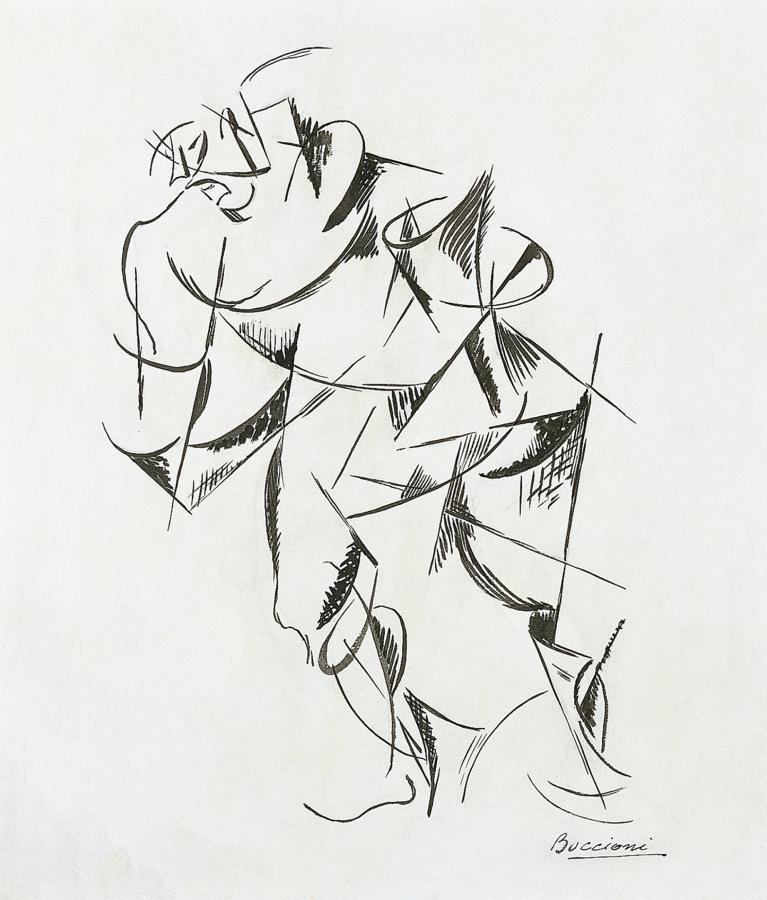Boccioni, Umberto (1882-1916)
Dinamismo di un corpo umano: pugile (Dynamism of the Human Body: Boxer)
1913
Ink on paper, 29 x 25 cm
Museo Thyssen-Bornemisza, Madrid
Just as Fortunato Depero developed a special interest in puppets and automata, at the beginning of 1912 the painter Umberto Boccioni, one of the signatories of the 1910 Technical Manifesto of Futurist Painting, decided to take up sculpture, making use of assemblage. During the first months of 1913, following the theories of Henri Bergson, his work was exclusively geared to the dynamism of forms as the idea that inspired his sculptures and a series of paintings on the theme of “Dynamism of the human body.”As can be seen from his drawing in the Thyssen-Bornemisza collection, Boccioni rejected the representation of movement through the repetitive sequence of images and based his art on “the intuitive search for the one single form which produces continuity in space.”
We know from the inscription on the verso, written by the work’s first owner, Antonio Maraldi, that the present work belonged to a set of forty-six drawings that were shown in spring 1914 at the prestigious Galleria Gonnelli in Florence, where the Esposizione Futurista “Lacerba” had been held a year earlier: “Dinamismo di un corpo umano [‘Boxeur?’] / Il disegno retro eseguito e timbrato in alto a destra fu consegnato da Umberto Boccioni al sottoscritto e faceva parte di una serie di disegni (46 in tutto) esposti alla Galleria Gonnelli (via Cavour Firenze) a rotazione, dalla prima quindicina di marzo 1914 (come documentato da ‘Lacerba’ in data 15 marzo 1914) alla prima decade di giugno dello stesso anno. In fede diquanto sopra Antonio Maraldi, Roma, via Valle Barbera, 14” (“Dynamism of the Human Body, [‘Boxeur?’] / The drawing made on the verso and stamped upper right was given by Umberto Boccioni to the undersigned and was part of the series of drawings [46 in total] shown at the Galleria Gonnelli [via Cavour, Florence] in rotation from the first fortnight in March to the first ten days in June that same year [as documented in ‘Lacerba’ on 15 March 1914]. In witness whereof, signed Antonio Maraldi, Rome, via Valle Barbera, 14.”)
Paloma Alarcó (T-B)
